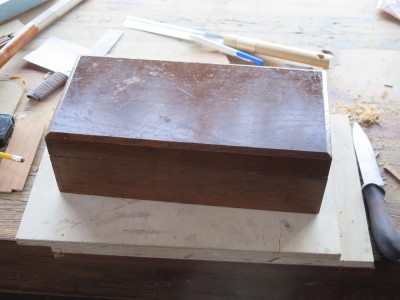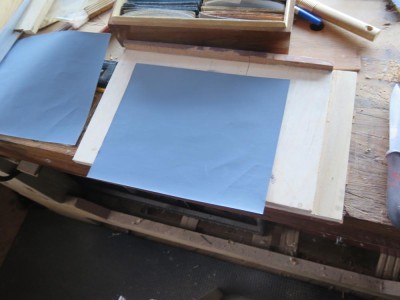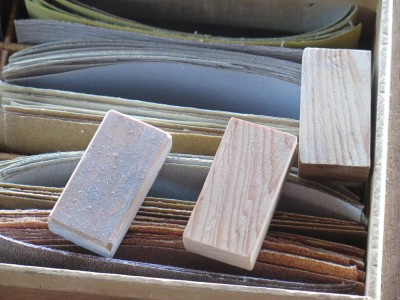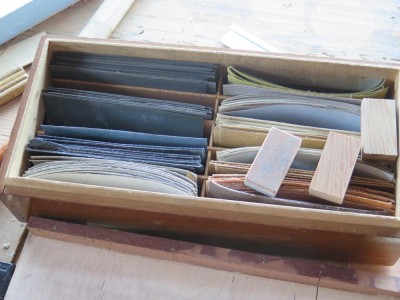A Box 40 Years In The Making

The genesis for this box goes back to my earliest days in the trade, when I got caught in the middle of a p!$$!ng contest between a cabinetmaker and a finisher in the shop where I was working. They were both opinionated and passionate about most things in the shop, but the real nexus of conflict for me was their insistence that there was a way, and only one way, to portion and use sandpaper. How was I to know it was a Battle Royale? It’s just a stupid piece of sandpaper!

The cabinetmaker insisted that a full sheet of sandpaper be creased on the center line of each axis, torn to the center of the sheet along one of those crease lines, then folded so that the four quadrants were stacked on top of each other when the sheet was folded. The finisher was equally adamant that the full sheet of sandpaper be cut in half along the short axis, with the remaining halves being folded in thirds for use. Being 16 or 17 at the time with no time in the trenches, my response was to try diligently to remember to simply use the sandpaper the same way as whichever of the psychopaths I was working with at the time.
Over time I gravitated to the half/thirds strategy of the finisher.
In recent times as my scale of work keeps getting smaller and smaller I struck out on a new path that disagreed with both of these cranks.

Yes, I now start by cutting a full sheet of sandpaper in half along the short axis.

Then I cut each of these halves into four equal pieces, divided along the short axis of the halved paper, yielding eight identical pieces per full sheet. I generally then take each of these 1/8 sheets and either fold it into three sections or cut it into three sections.

To use the small sandpaper pieces on the surfaces I fashioned a group of sanding blocks to work perfectly with the new size.

I made several dividers for the interior of my sandpaper box (purchased recently at a Cincinnati flea market), and filled it with paper in the following grades:
80 grit garnet/AlOx
120 grit garnet/ AlOx
150 grit Tri-M-ite silicone carbide
180 grit garnet/AlOx
220/240 grit Tri-M-ite
320 grit Tri-M-ite
400 grit Tri-M-ite
In identical spaces I include the following wet-or-dry silicon carbide paper:
220 grit
320 grit
400 grit
600 grit
1500 grit
I love this new arrangement as it makes the sandpaper easy to find and grab, and I see that my pile of “scrap” sand paper is much smaller. I also discovered that with these small pieces of paper I find myself switching off much more frequently to new sand paper rather than trying to “get just a little bit more” out of a bigger piece before I throw it away. Using sandpaper too long is counter productive in three ways; first, once the grit is gone any further effort will not accomplish much, it burnishes rather than abrades; second, “worn” sandpaper gums up a lot and imparts new problems to the surface; and third using sandpaper too long and on multiple projects leads to cross contamination headaches.
Once I get some time, perhaps this summer, I will put a proper japanned finish on the box. But for now it just sits on the work bench and gets used a lot while I get a smile on my face each time I reach for a new piece.
Who knew that both of those guys were wrong?


Join the Conversation!